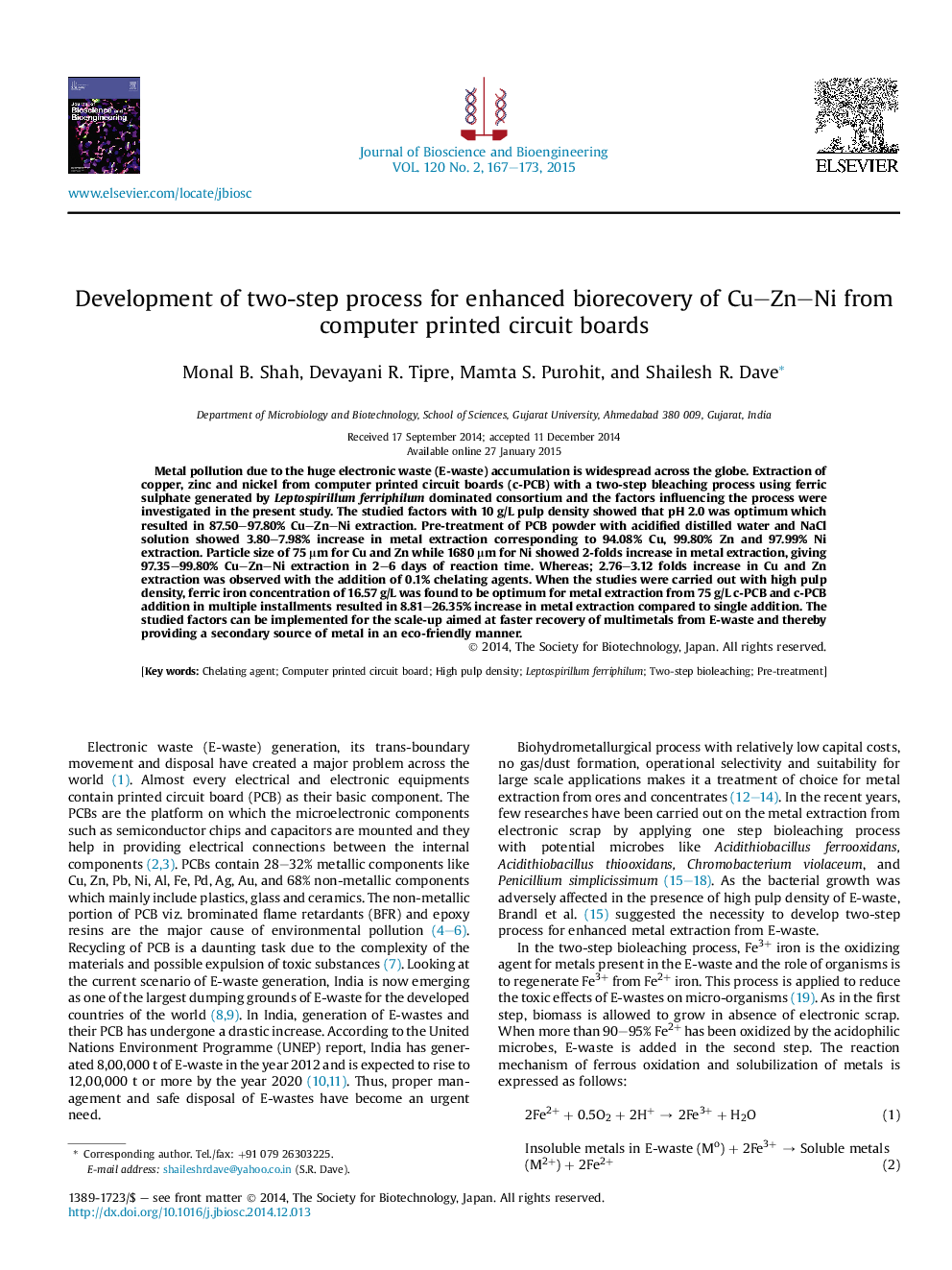| Article ID | Journal | Published Year | Pages | File Type |
|---|---|---|---|---|
| 20248 | Journal of Bioscience and Bioengineering | 2015 | 7 Pages |
Metal pollution due to the huge electronic waste (E-waste) accumulation is widespread across the globe. Extraction of copper, zinc and nickel from computer printed circuit boards (c-PCB) with a two-step bleaching process using ferric sulphate generated by Leptospirillum ferriphilum dominated consortium and the factors influencing the process were investigated in the present study. The studied factors with 10 g/L pulp density showed that pH 2.0 was optimum which resulted in 87.50–97.80% Cu–Zn–Ni extraction. Pre-treatment of PCB powder with acidified distilled water and NaCl solution showed 3.80–7.98% increase in metal extraction corresponding to 94.08% Cu, 99.80% Zn and 97.99% Ni extraction. Particle size of 75 μm for Cu and Zn while 1680 μm for Ni showed 2-folds increase in metal extraction, giving 97.35–99.80% Cu–Zn–Ni extraction in 2–6 days of reaction time. Whereas; 2.76–3.12 folds increase in Cu and Zn extraction was observed with the addition of 0.1% chelating agents. When the studies were carried out with high pulp density, ferric iron concentration of 16.57 g/L was found to be optimum for metal extraction from 75 g/L c-PCB and c-PCB addition in multiple installments resulted in 8.81–26.35% increase in metal extraction compared to single addition. The studied factors can be implemented for the scale-up aimed at faster recovery of multimetals from E-waste and thereby providing a secondary source of metal in an eco-friendly manner.
